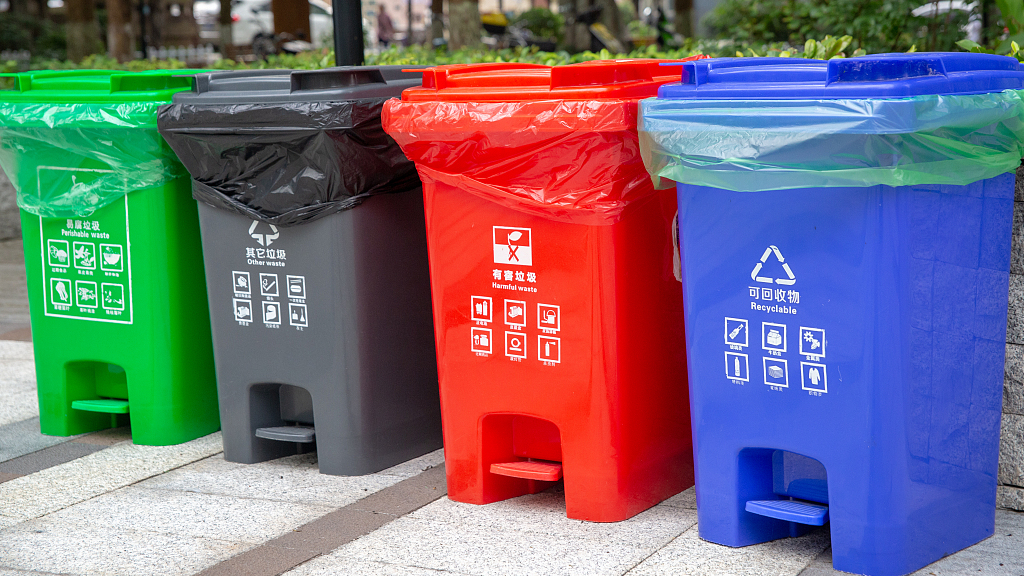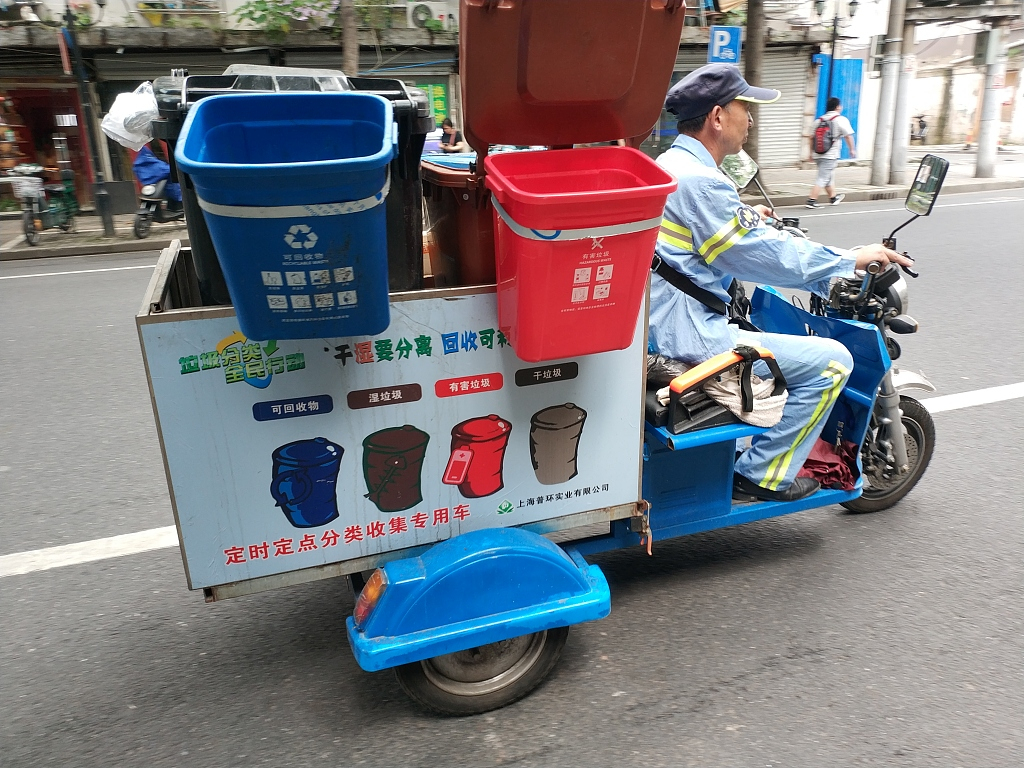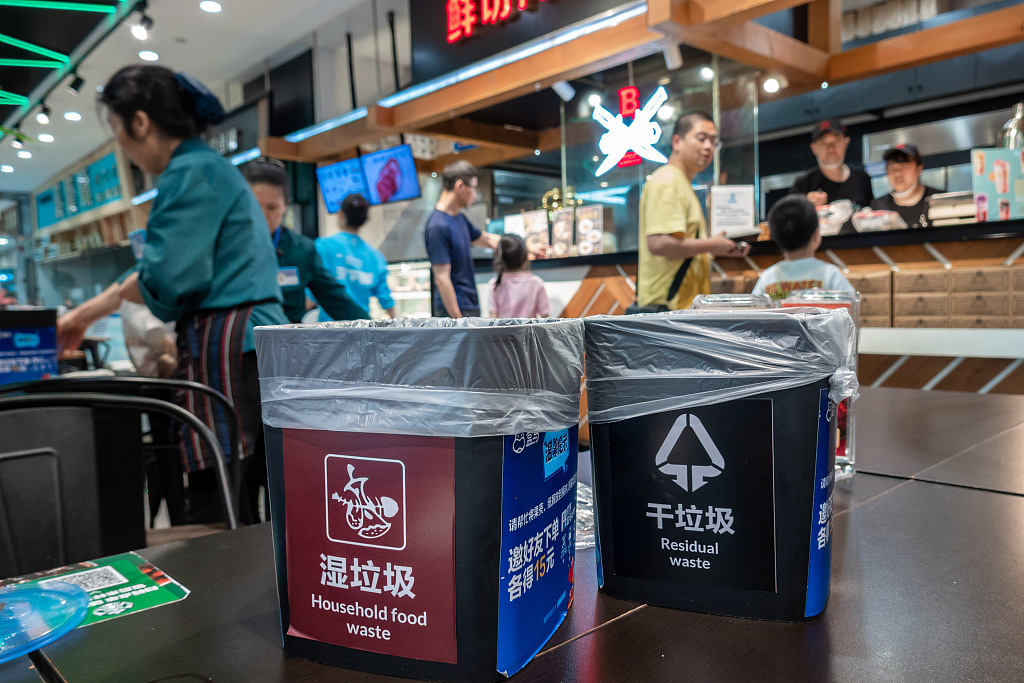

Editor's note: Wu Changhua is CEO of Beijing Future Innovation Center and executive director of the Professional Association for China's Environment. The article reflects the author's opinions, and not necessarily the views of CGTN.
“Lazyroo” is a neologism coined for a new group of consumers that live on ordering food and drinks online. Chinese consumers lead that trend. Today, about 400 million people in China use digital platforms to order takeaways. The year of 2018 experienced an 18 percent growth of “lazyroos” compared to the year before, with 7 million online orders every day on average.
The country experienced exponential growth of online takeaway orders between 2014 and 2018. Every year, Chinese consumers use 4 billion food delivery containers, 500 to 700 million instant noodle bowls, and a few billion single-use chopsticks. As a consequence, packaging generates more than one million tons of single-use plastic waste every year. It is forecast that this sector will continue to experience double-digit annual growth in the coming years.

A cleaner delievers recycling bins in Shanghai, China, July 3, 2019. /VCG Photo
Packaging waste from e-commerce has also emerged to become a significant challenge. In 2017, China’s express packages amounted to 40 billion. These packages used 8 billion plastic bags and 4 billion boxes. About 40 percent of them are entirely made of plastic. Today, statistics show that e-commerce packaging waste in large and medium-sized cities account for 85 percent of the newly added daily city household garbage.
Overwhelming? Absolutely. But we have also learned that the combined action of packaging waste sorting, recycling and reuse can help reduce 80 percent of plastic and 20 percent of dry garbage in cities. And this is exactly what the governments at the national and local levels are doing to solve the issue. From Net Zero Waste City pilots to the implementation of garbage sorting system in 46 cities, the country is determined to find solutions.
Shanghai leads the country’s current efforts to sort household trash by issuing and implementing a local regulation. Each household is required to separate its trash into four different bins – recyclable, hazardous, wet and dry. It is believed that by sorting garbage and putting them into separate bins and collection systems, cities can more effectively reduce landfill, and increase resources recycling. The determination is real as a supermarket in Shanghai has already been fined 30,000 yuan (about 4,353 U.S. dollars) for failing to sort their garbage properly.
Systematic change and integrated solutions are crucial. The current pilot projects of Net Zero Waste City in 11 cities and five districts are designed to seek systematic solutions to grapple with both urban trash flows and turn more waste back to resources. It is expected that packaging waste from both food and drink delivery and e-commerce can be better managed without compromising the environmental quality.
Another vital potential to unleash is procurement. This offers an earlier intervention so that more efficient solutions can be deployed up along the value chain. In the meantime, it provides an opportunity to lift environmental-friendly standards of products and services enabled by digital technologies. A “green” certification can accelerate a supply chain shift towards a green and more sustainable paradigm.

Recycling bins in a supermarket in Shanghai, China. /VCG Photo
For instance, leading companies like Meituan.com and Ele.me can join efforts with supply chain companies, academics and government regulators to develop a green food and drink packaging catalog. The process can be guided by sector or national standards and backed up by a certification scheme and an incentive scheme to rewards first movers. A similar logic applies to e-commerce packaging, too when leading companies come together to drive the acceleration of innovation and solutions.
Leading companies along value chains are joining hands to take actions. From Dow to Veolia, from JD.Com and Alibaba, from IKEA to DPDHL, global companies from China and beyond are investing in innovation and solutions. For instance, Dow, as a world leading material science company, is accelerating recyclable plastic packaging products. Veolia is becoming a global leader in the recycling economy. JD.COM invests heavily in smart green logistics.
Just imagine this: Upstream and downstream the value chain, eco-design guides packaging products and services that are established based on a sustainable economy. Leading companies all adopt EPR (extended producer’s responsibility) by procuring environmentally friendly products. Cities fully deploy garbage sorting to manage waste in a sustainable manner and consumers, assuming their duty, are fully informed of sustainable options when choosing products or services. This illustrates the potential of a vast new market which inspires technology innovation, attracts financial capital flow, and accelerates industrial transition for regional prosperity.
(If you want to contribute and have specific expertise, please contact us at opinions@cgtn.com.)

Copyright © 2018 CGTN. Beijing ICP prepared NO.16065310-3
Copyright © 2018 CGTN. Beijing ICP prepared NO.16065310-3